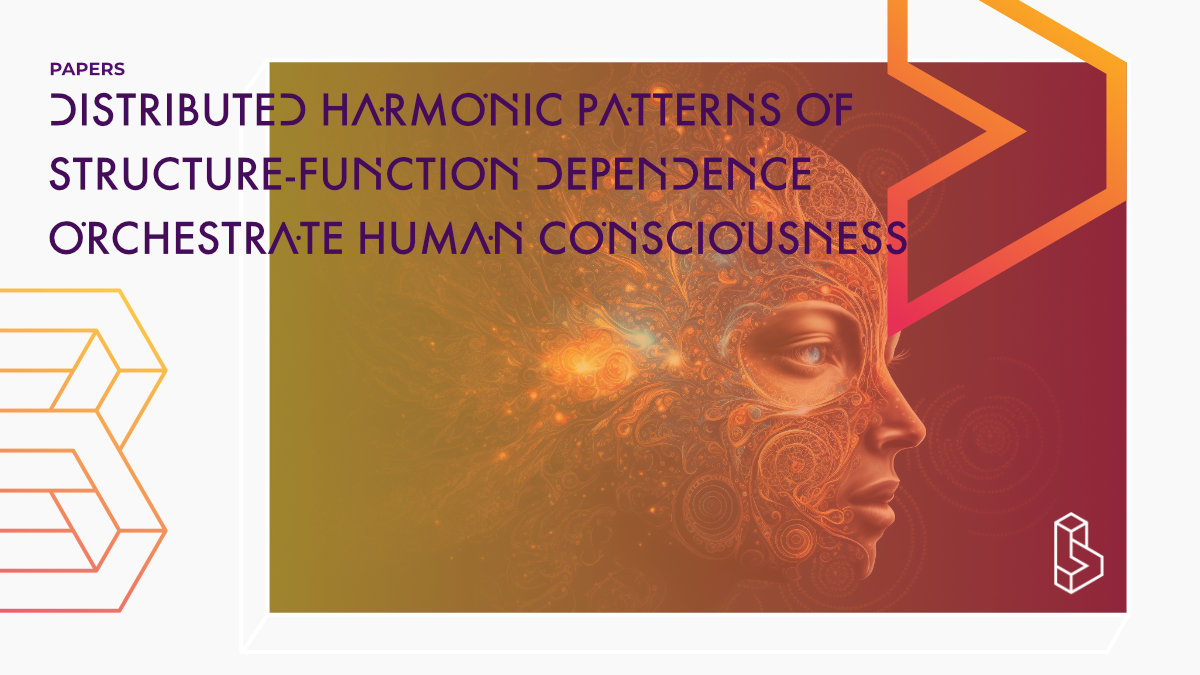This theory-building paper (2023) shows that structure-function coupling (patterns of brain activity) is a generalisable indicator of consciousness. An increase in functional coupling indicates a loss of consciousness (e.g. brain-inured patients or anaesthesia), and opposite changes (decoupling of brain function from structure) are seen under the influence of psychedelics (e.g. LSD or ketamine).
Abstract
“A central question in neuroscience is how consciousness arises from the dynamic interplay of brain structure and function. Here we decompose functional MRI signals from pathological and pharmacologically-induced perturbations of consciousness into distributed patterns of structure-function dependence across scales: the harmonic modes of the human structural connectome. We show that structure-function coupling is a generalisable indicator of consciousness that is under bi-directional neuromodulatory control. We find increased structure-function coupling across scales during loss of consciousness, whether due to anaesthesia or brain injury, capable of discriminating between behaviourally indistinguishable sub-categories of brain-injured patients, tracking the presence of covert consciousness. The opposite harmonic signature characterises the altered state induced by LSD or ketamine, reflecting psychedelic-induced decoupling of brain function from structure and correlating with physiological and subjective scores. Overall, connectome harmonic decomposition reveals how neuromodulation and the network architecture of the human connectome jointly shape consciousness and distributed functional activation across scales.”
Authors: Andrea I. Luppi, Jakub Vohryzek, Morten L. Kringelbach, Pedro A. M. Mediano, Michael M. Craig, Ram Adapa, Robin L. Carhart-Harris, Leor Roseman, Ioannis Pappas, Alexander R. D. Peattie, Anne E. Manktelow, Barbara J. Sahakian, Paola Finoia, Guy B. Williams, Judith Allanson, John D. Pickard, David K. Menon, Selen Atasoy & Emmanuel A. Stamatakis
Summary of Distributed harmonic patterns of structure-function dependence orchestrate human consciousness
Understanding the neural underpinnings of human consciousness is a major challenge of contemporary neuroscience. Recent advances have provided fundamental insights into loss of consciousness and its signatures, including the pattern of co-fluctuations between regional BOLD time series (functional connectivity; FC) and anatomical connections between regions.
Existing investigations of structure-function correspondence during altered states of consciousness have typically relied on correlation or distance metrics, which do not account for the inherently asymmetric relationship between brain structure and function.
Find this paper
Distributed harmonic patterns of structure-function dependence orchestrate human consciousness
https://doi.org/10.1038/s42003-023-04474-1
Open Access | Google Scholar | Backup | 🕊
Study details
Compounds studied
LSD
Ketamine
Topics studied
Neuroscience
Study characteristics
Theory Building
Bio/Neuro
Authors
Authors associated with this publication with profiles on Blossom
Leor RosemanLeor Roseman is a researcher at the Centre for Psychedelic Research, Imperial College London. His work focussed on psilocybin for depression, but is now related to peace-building through psychedelics.
Robin Carhart-Harris
Dr. Robin Carhart-Harris is the Founding Director of the Neuroscape Psychedelics Division at UCSF. Previously he led the Psychedelic group at Imperial College London.
Linked Research Papers
Notable research papers that build on or are influenced by this paper
Connectome-harmonic decomposition of human brain activity reveals dynamical repertoire re-organization under LSDThis placebo-controlled within-subjects study (n=12) analysed fMRI data of participants' brain activity in response to LSD (75μg/70kg) with or without the influence of listening to music. Using a novel connectome-specific harmonic decomposition method, they found that brain states under the influence of LSD exhibit a wider and more flexible repertoire of activation patterns, which maintain a unique type of non-random stability in their co-activation over time.

